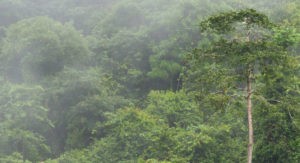Honduran Mahogany

Mahogany is a medium-lightweight wood, ranging in color from light brown to dark. It has a balanced, resonant tone with notable sustain. Mahogany delivers a thick bottom end, rich midrange, and controlled, warm top end.
Honduran mahogany (Swietenia macrophylla) trees prefer basking in the sunshine; they can tolerate a bit of shade, but they’re happiest and healthiest when their leaves have unfettered access to sunlight. The tree that supplied your tonewood probably grew in a low-elevation rainforest, in a bright, sunny location, in dry, well-drained soil, surrounded by other mahogany trees, possibly near a river or stream. Honduran mahogany trees are large, fast-growing, long-lived trees – in the wild they can live for a couple of centuries – so they make a great long-term habitat for height-loving animals and insects that live high in forest canopy. The flowers and fruits of the woody, vining plants that crawl up their trunks help sustain the canopy-dwelling creatures. These majestic trees provide shelter for birds like toucans and macaws, and pollen and nectar for bees and a wide variety of small butterflies. The fruit from these trees can be a meal for large parrots (while on the tree) and for tropical rodents like pacas and cutias (when the seeds fall to the ground). Honduran mahogany seedlings and saplings also support the rainforest ecosystem, including creepy crawly winged things – one species of moth has no other known food source.









